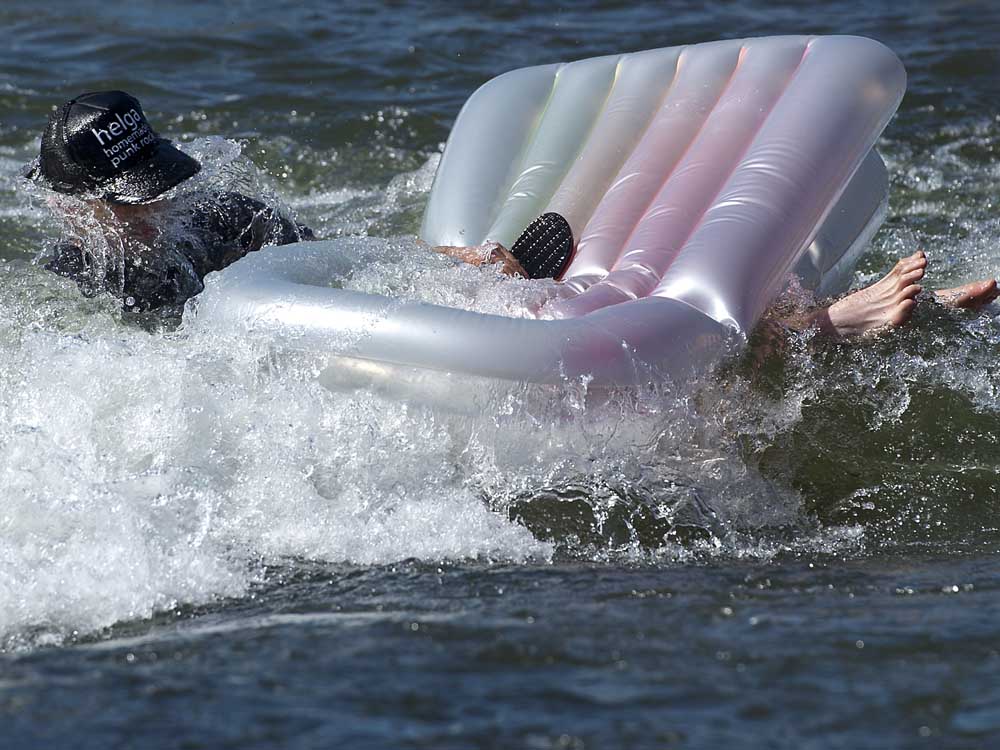Editorial: Good compromise on helmets for whitewater
Published 11:56 pm Wednesday, May 17, 2017

- A floater fights to keep control of his raft after falling over while navigating through the passageway channel of the Bend Whitewater Park.Ryan Brennecke / The Bulletin File Photo
River sports can be dangerous. That’s why Oregon law requires that whitewater rafters in the state wear approved life vests whenever they’re in water with Class III rapids or higher. Now, lawmakers are set to add a requirement to the life-vest law.
Oregon Senate Bill 643-A was unanimously approved by the Senate’s Environment and Natural Resources Committee and awaits action in the Rules Committee. It would require commercial outfitters and river guides to make appropriate helmets available to all passengers who want them on Class III or higher rapids.
The bill began requiring all rafters 17 and younger to use helmets on Class III rapids, which outfitters say are dangerous enough that they should not be tackled by amateurs without guides. The difficulty of rapids goes up to Class VI, which can be very dangerous.
On the Deschutes, Boxcar and Wapinitia downstream from Maupin are Class III, as is Big Eddy, upstream from Bend.
The bill has since been modified to require only that outfitters offer helmets to passengers on Class III and higher stretches of river.
It’s a good compromise. While fatal head injuries on commercial rafting trips are relatively rare, they do occur.
Two years ago, for example, a Troutdale woman died of a head injury she suffered on the lower Deschutes.
It was the death of Sharon Birge that led to SB 643.
A study of commercial whitewater rafting accidents in West Virginia found that between 0.22 and 0.44 accidents occurred per 1,000 rafting days, and 60 percent of those hurt were able to complete their trips. Death rates, calculated elsewhere, were about 6 to 10 for every 2.5 million rafting days.
Offering rafters helmets should serve to make them aware that they won’t be paddling around in a swimming pool — that rafting, like skiing, can be dangerous.
Then, would-be rafters can decide for themselves whether helmets will be worn. SB 643-A would leave the decision to wear — or not wear — up to the person taking the risk. That’s as it should be.






